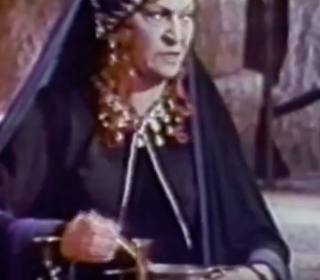Mirror Mirror is a DuckTales fanfiction written by a fan going by “soulful-sin” (fanfiction writers usually have just the silliest name; this isn't a special case). More precisely, its appeal lies in that it is a crossover of sorts between the classic Duck universe and DuckTales 2017.
(An unrelatd, but also very entertaining, fanmade take
on the ‘Webby meets Webby’ premise.)
The basic plot is that the 1987 version of Webby Vanderquack is dared by the triplets to touch a creepy old mirror Scrooge has in his archives. Naturally, the mirror turns out to be a cursed artifact, which transports her to alternate dimension — a strange world where the boys have different personalities, where it's already the 21st century, and where she is herself a strong, independent adventurer rather than the meek little girl who has to stow away if she wants to go on any adventures at all with Scrooge and the boys. The mirror then gets shattered, trapping Webby in the DT17 universe, and Scrooge has to make a deal with Magica De Spell to repair it.
The story certainly has a lot going for it.
For one thing, all the characters, from both series, are written perfectly in-character (it's impossible not to hear Louie-17 as Bobby Moynihan or Scrooge-87 as Alan Young), and the crossover unfolds very nicely. The story manages to make you care about classic-Webby even with the other, universally-considered-more-interesting Webby running around at the same time. Both worlds are, in general, rendered very faithfully — with the irritating, borderline-inexplicable exception that Duckburg is persistently misspelled as “Duckberg”.
Soulful-sin also tentatively takes a stab at a possible return of Lena De Spell, which may not be the most imaginative, but allows for emotional stuff between her and Webby. (For good or ill, the story has a lot of ‘emotional stuff’. No romance per se, though the author stated their love of the Webby/Lena pairing elsewhere, but just general angst.)
There are, I think, two blunders in this story's conceit, beyond the fact that the writing, while solid, is not quite of professional quality. The first is a surprising absence of the humor so essential to both DuckTales series' appeal. The second is that, forced to acknowledge DT17's Della plotline, Soulful-sin felt compelled to clarify Della's fate in the prime timeline as well, and it has nothing whatsoever to do with… anything. Not only is Family Ties ignored (which is odd, considering its very clear parallels with the DT17 story), but the Mirror Mirror version implies that Scrooge was indeed adventuring with Della around the time of the triplets' birth, a blatant DT17 contamination that in no way fits the classic timeline.
Still, the DuckTales fanfiction community isn't exactly of Harry Potter level in scale, and we should take what we can get. Mirror Mirror is definitely on the upper end of Duck fanfiction as it exists for now, and if you've ever wondered what the two worlds crashing into each other might look like, and don't mind a healthy helping of sappy angst, it's a pleasant enough read.
Ye Olde Post-Scriptum
Three other weird decisions by Soulful-sin that I fail to understand: 17-Magica swears a lot (though it's never taken down word for word; we're just told 'she cursed', 'she said a string of very bad words Mrs Beakley certainly wouldn't approve of', etc.). Classic-Scrooge is orders of magnitude less wealthy than 17-Scrooge……er, why? And finally, there are repeated reference to this post-Shadow War story taking place in 2017, as opposed to the canonical 2018. No idea why. Since there was a Christmas episode halfway through the season, one would presume it was obvious that the year's changed, but apparently not to Soulfun-sin.
Ye Olde Post-Scriptum
Three other weird decisions by Soulful-sin that I fail to understand: 17-Magica swears a lot (though it's never taken down word for word; we're just told 'she cursed', 'she said a string of very bad words Mrs Beakley certainly wouldn't approve of', etc.). Classic-Scrooge is orders of magnitude less wealthy than 17-Scrooge……er, why? And finally, there are repeated reference to this post-Shadow War story taking place in 2017, as opposed to the canonical 2018. No idea why. Since there was a Christmas episode halfway through the season, one would presume it was obvious that the year's changed, but apparently not to Soulfun-sin.



























